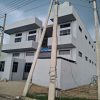
Top 10 Business Opportunities in Saudi Arabia
Top 10 Business Opportunities in Saudi Arabia: A Comprehensive Investment Guide
Saudi Arabia stands at the forefront of one of the most ambitious economic transformations in modern history. Under the visionary Saudi Vision 2030 framework, the Kingdom is rapidly diversifying away from its traditional oil dependency toward a knowledge-based, innovation-driven economy. This transformation has unlocked unprecedented business opportunities across multiple sectors, attracting billions in foreign direct investment and creating a dynamic ecosystem for entrepreneurs and established enterprises alike.
The Kingdom’s strategic initiatives are backed by robust policy reforms, including the allowance of 100% foreign ownership in key sectors, streamlined licensing processes through the Ministry of Investment (MISA), and substantial government funding allocated to priority industries. With FDI projected to reach SAR 388 billion by 2030, representing a 22% compound annual growth rate, Saudi Arabia has positioned itself as the premier investment destination in the Middle East and North Africa region.
This comprehensive guide examines the top 10 business opportunities in Saudi Arabia for 2025, providing detailed insights into investment requirements, market dynamics, growth projections, and strategic considerations for each sector. Based on extensive research and current market data, this analysis serves as an essential resource for investors seeking to capitalize on the Kingdom’s economic renaissance.
ListUnite will help you set up your business in Saudi Arabia and provide proper support in day-to-day activities.
1. Renewable Energy: Powering Saudi Arabia’s Sustainable Future
Market Overview and Investment Potential
The renewable energy sector represents one of the most transformative opportunities in Saudi Arabia’s economic landscape. The Kingdom has committed to generating 50% of its electricity from renewable sources by 2030, with an ambitious target of 130 gigawatts of renewable energy capacity—including 58.7 GW from solar and 40 GW from wind power. This massive shift is driven by the National Renewable Energy Program (NREP), which has already awarded contracts worth billions of dollars for solar and wind projects across the Kingdom.
In October 2025, Saudi Arabia awarded five renewable energy projects with a combined capacity of 4,500 megawatts, totaling investments exceeding $2.4 billion. These projects achieved record-low levelized costs of electricity, with the Dawadmi Wind IPP Plant setting a world record at 1.33803 US cents per kilowatt-hour. The Najran Solar Energy Project, developed in partnership with Masdar, achieved the second-lowest global solar energy cost at 1.09682 US cents per kWh.
Investment Requirements and Financial Considerations
Capital Investment Range: SAR 5 million to SAR 2.4 billion per project, depending on scale and technology
Key Investment Areas:
- Solar photovoltaic farms and concentrated solar power plants
- Wind energy installations across favorable geographic zones
- Green hydrogen production facilities (NEOM project: $8.5 billion investment)
- Battery energy storage systems and grid infrastructure
- Equipment manufacturing and supply chain operations
The government of Saudi Arabia has committed to investing $109 billion over 20 years specifically for solar energy development. Private sector participation is actively encouraged through competitive bidding processes, power purchase agreements (PPAs), and independent power producer (IPP) models that provide long-term revenue certainty.
Growth Drivers and Market Dynamics
Several compelling factors drive the exponential growth of renewable energy in Saudi Arabia. The Kingdom’s geographical advantages include abundant solar radiation exceeding 2,200 kWh per square meter annually and extensive land availability for large-scale installations. The government’s commitment to reducing carbon emissions and achieving carbon neutrality by 2060 creates sustained policy support for renewable energy investments.
Economic diversification imperatives under Vision 2030 position renewable energy as a cornerstone of non-oil GDP growth. Studies indicate that renewable energy investments significantly enhance long-term GDP growth, trade balance, and foreign direct investment, though their short-term influence on employment remains modest. The NEOM Green Hydrogen Project alone is expected to produce 600 tons of green hydrogen daily, positioning Saudi Arabia as a global leader in clean fuel production and export.
Profitability Timeline and Return Expectations
Renewable energy projects typically require 5-10 years to achieve full return on investment, considering development timelines, grid connection procedures, and operational ramp-up periods. However, the combination of record-low energy costs, government support, and long-term PPAs creates attractive risk-adjusted returns. Projects secured through competitive auctions often include 25-year power purchase agreements, providing stable cash flows and reducing market risk.
Strategic Challenges and Risk Mitigation
Investors must navigate several challenges, including high initial capital requirements, the need for specialized technical expertise, and grid integration complexities. The Kingdom’s electricity grid is undergoing modernization to accommodate variable renewable energy sources, requiring coordination with the Saudi Electricity Company. Environmental factors such as dust accumulation on solar panels and extreme temperatures necessitate robust maintenance protocols and technology adaptations.
Regulatory considerations include compliance with the Real Estate General Authority for land acquisition, environmental impact assessments, and coordination with multiple government entities. Successful investors typically form partnerships with experienced local entities or international renewable energy developers with proven track records in the region.
2. Tourism and Hospitality: Building a World-Class Destination
Sector Transformation and Investment Landscape
Saudi Arabia’s tourism sector is experiencing unprecedented growth, driven by the Kingdom’s ambitious goal to attract 100 million visitors annually by 2030 and increase tourism’s GDP contribution from 4.4% to 10%. In 2023, the Kingdom achieved over 100 million tourist arrivals, with combined domestic and international tourism spending reaching $68 billion. International arrivals grew by 56% compared to 2019, positioning Saudi Arabia as the leading G20 destination for tourism growth.
The sector is underpinned by transformational mega-projects including NEOM, the Red Sea Project (a $23.6 billion luxury eco-destination with 50 resorts), AlUla’s cultural heritage sites, and Qiddiya (a $9.8 billion entertainment city). These developments are creating immediate demand for hospitality services, tour operations, and tourism-related businesses across multiple price segments.
Investment Requirements Across Segments
Capital Investment Range: SAR 150,000 to SAR 1.3 billion+, varying by business model and scale
Key Investment Opportunities:
- Luxury Hotels and Resorts: SAR 500 million to SAR 1.3 billion for full-service properties in prime locations
- Midscale and Budget Hotels: SAR 50-150 million for branded properties in secondary cities
- Tour Operations and Travel Services: SAR 500,000 to SAR 3 million for licensing, vehicles, and operations
- MICE Facilities: SAR 100-500 million for convention centers and business tourism infrastructure
- Cultural Tourism: SAR 2-10 million for heritage site interpretation, artisan markets, and experience centers
The government has introduced the Tourism Investment Enabler Program (TIEP), which streamlines licensing to just 5 days, cancels municipality licensing fees, and provides access to the Tourism Development Fund, which has already provided over $2 billion in financial support.
Market Dynamics and Growth Trajectory
The hospitality sector is experiencing explosive expansion, with 275 projects comprising 67,614 rooms currently in the construction pipeline. The Kingdom aims to expand total hotel capacity to 500,000 rooms by 2030, with international brand share projected to increase from 47% to 65%. Major global hotel chains including Marriott, Hilton, IHG, and Accor are aggressively expanding their portfolios, particularly in giga-project locations.
The Red Sea Project alone will contribute SAR 85 billion to GDP upon completion, while NEOM’s integrated tourism offerings represent decades of sustained development and operational opportunities. Religious tourism to Makkah and Madinah continues to provide stable demand, complemented by emerging leisure and cultural tourism segments.
Profitability and Return Considerations
Tourism and hospitality investments typically achieve returns within 3-7 years, depending on location, market positioning, and operational efficiency. Average daily rates (ADRs) in Riyadh are projected to increase by 13% in 2024, while occupancy rates across major cities consistently exceed 70% during peak seasons. Luxury and branded properties command premium pricing, with luxury resorts in Red Sea destinations expected to achieve ADRs exceeding $500 per night.
The e-visa program covering 66 countries has significantly improved access for international visitors, reducing a major barrier to tourism growth. Government initiatives supporting infrastructure development, including the new King Salman International Airport (designed for 120 million passengers annually), further enhance the sector’s long-term viability.
Operating Challenges and Success Factors
Key challenges include managing seasonal demand fluctuations, particularly related to Hajj and Umrah pilgrimages, navigating cultural sensitivity requirements for entertainment and alcohol restrictions, and competing in an increasingly crowded market as capacity expands. Talent acquisition and retention pose ongoing challenges, as the Kingdom aims to develop a skilled hospitality workforce capable of delivering international service standards.
Successful operators emphasize cultural intelligence, local partnership development, and differentiated positioning that appeals to both domestic and international guests. Understanding regional preferences, Islamic principles, and family-oriented services creates competitive advantages in this evolving market.
3. Healthcare Services: Addressing Growing Demand for Quality Care
Sector Evolution and Investment Climate
Saudi Arabia’s healthcare sector is undergoing radical transformation, with the government planning to invest over $65 billion to develop infrastructure, privatize services, and expand e-health capabilities. Under Vision 2030, the Kingdom aims to increase private sector contribution from 40% to 65% by 2030, targeting privatization of 290 hospitals and 2,300 primary health centers. This massive restructuring creates exceptional opportunities for private healthcare providers, medical device companies, pharmaceutical manufacturers, and healthcare technology firms.
In October 2024, Saudi Arabia announced healthcare investment deals exceeding $13.3 billion during the Global Health Exhibition in Riyadh. Major agreements included a $1 billion pharmaceuticals manufacturing partnership involving NUPCO, Novo Nordisk, and Sanofi, a $1.3 billion expansion by Fakeeh Care Group, and $798 million from Almoosa Health Group to establish primary care centers and hospitals.
Investment Requirements and Capital Considerations
Capital Investment Range: SAR 3 million to SAR 1 billion+, depending on facility type and services
Key Investment Segments:
- Private Hospitals: SAR 500 million to SAR 1 billion for 250-bed facilities with specialized departments
- Outpatient Clinics: SAR 10-30 million for multi-specialty centers
- Diagnostic Centers: SAR 15-50 million for advanced imaging and laboratory facilities
- Telemedicine Platforms: SAR 5-20 million for digital health infrastructure
- Medical Device Distribution: SAR 3-10 million for licensing, inventory, and logistics
The Ministry of Health has developed virtual platforms providing single-point access to relevant information about healthcare entities, certifications, and regulations, significantly improving the investor experience. Major private healthcare groups including Saudi German Health, Dr. Sulaiman Al-Habib Medical Group, and King’s College Hospital have announced substantial expansion plans.
Market Drivers and Growth Indicators
Saudi Arabia faces significant public health challenges that drive healthcare demand. Approximately 18% of the adult population has diabetes, while over 40% are obese, contributing to high rates of cardiovascular disease and other non-communicable conditions. These chronic disease burdens account for 68% of all deaths, creating sustained demand for preventive care, treatment services, and ongoing disease management.
The government’s emphasis on preventative care aims to double primary healthcare visits per capita from two to four annually. The development of 21 “health clusters” across the Kingdom—integrated networks serving approximately one million people each—creates opportunities for specialized service providers, diagnostic facilities, and support services. Two clusters have already launched in Riyadh, with additional rollouts planned nationwide.
Population growth, increasing health awareness, and rising disposable incomes among Saudi citizens further amplify healthcare service demand. The Kingdom’s young, tech-savvy population (70% under 35) demonstrates high adoption rates for digital health solutions, creating opportunities for innovative telemedicine, health apps, and remote monitoring platforms.
Return on Investment and Profitability Timeline
Healthcare investments typically require 5-10 years for full return realization, reflecting the time needed for facility development, licensing, staff recruitment, and patient base establishment. However, the sector offers stable, recurring revenue streams with relatively low cyclical sensitivity. Private hospitals report strong occupancy rates exceeding 75% in major cities, with premium facilities commanding higher margins.
The government’s commitment to healthcare transformation, including separation of payers, providers, and regulators, creates a more transparent and efficient market structure that supports sustainable profitability. Public-private partnerships increasingly provide guaranteed patient volumes and stable reimbursement arrangements, reducing market risk for private operators.
Regulatory and Operational Challenges
Healthcare providers must navigate complex regulatory requirements including licensing from the Saudi Health Council, compliance with stringent quality standards, and adherence to international accreditation requirements. The Ministry of Health prioritizes increasing the number of internationally accredited hospitals, creating additional compliance burdens for operators.
Talent shortages represent a persistent challenge, as the Kingdom competes globally for qualified physicians, nurses, and specialized medical professionals. Investment in training programs, competitive compensation packages, and continuing education infrastructure is essential for attracting and retaining top talent. Additionally, understanding and respecting cultural norms regarding gender segregation in facilities, modesty requirements, and family-centered care models is crucial for operational success.
4. E-Commerce and Digital Retail: Capturing Saudi’s Digital-First Consumers
Market Explosion and Digital Transformation
Saudi Arabia’s e-commerce sector is experiencing explosive growth, with the market projected to reach $68.94 billion by 2033, growing at a robust 12.10% compound annual growth rate. This remarkable expansion is fueled by near-universal internet penetration (approximately 100% in urban areas), a young, digitally native population, and sophisticated digital payment infrastructure. In 2024, e-payments accounted for 79% of all retail transactions, up from 70% the previous year, demonstrating the Kingdom’s rapid transition to cashless commerce.
The e-commerce ecosystem benefits from government initiatives supporting digital entrepreneurship, streamlined business registration processes, and investment in last-mile delivery infrastructure. Major international platforms including Amazon (Souq.com), Noon, and Alibaba (Tmall) have established significant operations in the Kingdom, while local players such as Jarir and Extra continue expanding their digital presence.
Investment Requirements and Startup Costs
Capital Investment Range: SAR 50,000 to SAR 150,000 for basic e-commerce startups
Detailed Cost Breakdown for E-Commerce Setup:
- Platform Development: SAR 45,000-70,000 for basic functionality; SAR 70,000-140,000 for mid-level platforms with advanced features
- Commercial Registration: SAR 500-5,000 annually depending on business structure
- E-Commerce License: SAR 3,000-8,000 through Ministry of Commerce
- Payment Gateway Integration: SAR 5,000-15,000 initial setup
- Inventory and Warehousing: SAR 10,000-50,000 for initial stock and storage
- Digital Marketing: SAR 5,000-20,000 monthly for customer acquisition
Cloud kitchen models for food e-commerce require approximately SAR 50,000 in startup capital, significantly lower than traditional restaurant investments. Specialized niches such as luxury products (Dubai Chocolate ventures) can achieve exceptional margins, with profit per unit reaching SAR 34 ($9) and monthly profits exceeding SAR 340,000 for businesses selling 10,000 units.
Growth Catalysts and Market Segments
Multiple factors drive e-commerce expansion in Saudi Arabia. The Vision 2030 emphasis on digital economy development has resulted in regulatory reforms that facilitate online business establishment and operation. The Kingdom’s 100% foreign ownership policy in retail and e-commerce sectors attracts international brands and platforms seeking regional expansion.
Key e-commerce segments include:
- Fashion and Apparel: Fastest-growing category driven by social media influence and changing lifestyle preferences
- Electronics and Gadgets: High-value segment with strong consumer demand for latest technology
- Grocery and Fresh Food Delivery: Rapid growth during and post-pandemic, now an established consumer behavior
- Luxury and Beauty Products: Premium segment with high margins and repeat customer rates
The Saudi Food and Drug Authority (SFDA) has modernized regulations for food and pharmaceutical e-commerce, removing historical barriers and enabling specialized players to enter these previously restricted categories.
Profitability Timeline and Scaling Potential
E-commerce businesses typically achieve profitability within 1-3 years, making them among the fastest-returning investments in Saudi Arabia. The digital nature of operations enables rapid scaling without proportional increases in fixed costs, creating attractive unit economics as businesses grow. Successful platforms leverage social media marketing, influencer partnerships, and targeted digital advertising to acquire customers efficiently.
Cloud-first infrastructure, integration with local payment gateways (Mada, STCPay, Apple Pay), and partnerships with established logistics providers accelerate market entry and reduce operational complexity. The Kingdom’s small geographic footprint (relative to its population density in major cities) facilitates efficient delivery operations, with many businesses achieving same-day or next-day delivery in Riyadh, Jeddah, and Dammam.
Operational Challenges and Competitive Considerations
Despite strong growth prospects, e-commerce operators face several challenges. Last-mile delivery in remote areas remains expensive and operationally complex, requiring strategic decisions about geographic coverage and service levels. Customer acquisition costs have increased as the market becomes more competitive, necessitating sophisticated marketing strategies and strong brand differentiation.
Market saturation in certain categories, particularly electronics and fashion, intensifies price competition and margin pressure. Successful players focus on niche positioning, superior customer service, and loyalty programs to retain customers in a competitive environment. Additionally, managing returns and exchanges, maintaining product quality, and ensuring data security and privacy compliance require robust operational systems and ongoing investment.
5. Real Estate and Construction: Building Saudi Arabia’s Future Infrastructure
Sector Dynamics and Mega-Project Pipeline
Saudi Arabia’s real estate and construction sector is experiencing unprecedented growth, with the market valued at $70.33 billion in 2024 and projected to reach $91.36 billion by 2029, representing a compound annual growth rate of 5.37%. This expansion is directly attributable to Vision 2030 mega-projects, including the $500 billion NEOM smart city, the $23.6 billion Red Sea Global luxury tourism development, and the $9.8 billion Qiddiya entertainment hub.
The sector recorded real estate transactions worth SAR 109 billion in Q1 2025 alone, fueled in part by the Premium Residency program and expanded foreign ownership rights. Upcoming mega-events including Expo 2030 in Riyadh and the FIFA World Cup 2034 are driving massive infrastructure investments across transportation, hospitality, and urban development.
Investment Requirements and Market Segments
Capital Investment Range: SAR 500,000 to SAR 5 million+ for standard developments; significantly higher for large-scale projects
Key Investment Opportunities:
- Residential Development: SAR 5-50 million for apartment complexes and villa communities
- Commercial Real Estate: SAR 10-100 million for office towers and retail centers
- Construction Services: SAR 950,000-10 million for contracting licenses, equipment, and working capital
- Infrastructure Projects: SAR 50 million+ for roads, utilities, and public works contracts
- Property Management: SAR 1-5 million for facility management operations
In July 2025, Saudi Arabia approved landmark legislation allowing foreigners to purchase and own real estate in designated zones, effective January 2026. This transformative policy opens the market to global investors, banks, and institutions, creating a Dubai-style real estate investment ecosystem. Foreign ownership is permitted in major cities including Riyadh and Jeddah, though restrictions remain in the holy cities of Makkah and Madinah.
Market Drivers and Growth Trajectory
Multiple compelling factors drive real estate sector expansion. The Kingdom’s population is growing rapidly, with continued urbanization creating sustained demand for residential units. Major employers relocating regional headquarters to Riyadh under government incentives generate demand for premium office space and executive housing.
Giga-projects represent 73% of the hotel supply pipeline, with 275 projects comprising 67,614 rooms under construction. The King Salman International Airport development, designed to handle 120 million passengers annually, will catalyze surrounding commercial and residential development. Riyadh’s Green Riyadh initiative aims to plant 7.5 million trees and create green spaces throughout the capital, enhancing livability and property values.
A recent PwC report projects 30% growth for the real estate market through 2025. New developments worth $38 billion have been announced, focusing on mixed-use residential communities and sustainable housing aligned with environmental goals. JLL forecasts the overall property market to grow to $102 billion by 2029, driven by rental yield optimization and rising average daily rates in hospitality segments.
Return on Investment and Value Appreciation
Real estate investments typically achieve returns within 3-5 years for development projects and longer horizons for land banking strategies. Rental yields in Riyadh range from 5-7% for residential properties and 7-10% for prime commercial assets. Property values in major cities have appreciated 4% year-over-year, with areas adjacent to mega-projects experiencing significantly higher appreciation rates.
The National Investment Strategy projects FDI inflows to reach SAR 388 billion by 2030, reflecting a 22% CAGR from 2023 levels, with substantial portions flowing into real estate. Favorable regulatory reforms, including streamlined title registration, digitized land records, and property-specific dispute resolution mechanisms, enhance transparency and reduce investment risk.
Regulatory Landscape and Investment Considerations
The Real Estate General Authority has implemented comprehensive reforms modernizing the sector. Foreign investors must obtain appropriate licenses through the Ministry of Investment (MISA) and comply with designated zone restrictions. The Premium Residency program requires property ownership or long-term lease worth at least SAR 4 million, with no mortgage encumbrance and independent valuation by TAQEEM-accredited valuers.
Construction companies must navigate complex licensing requirements, including classification by the Saudi Council of Engineers, municipality approvals, and labor regulations. The sector faces challenges including regulatory changes, market volatility particularly related to oil price fluctuations, and high land costs in prime locations. Successful investors conduct thorough due diligence, establish local partnerships, and maintain flexibility to adapt to evolving market conditions.
6. Technology and IT Services: Powering Saudi Arabia’s Digital Economy
Digital Transformation and Market Opportunity
Saudi Arabia’s information and communication technology (ICT) market is valued at over SAR 180 billion in 2025, making it the largest in the Middle East and North Africa. The Kingdom’s aggressive digitalization push under Vision 2030 has created exceptional opportunities for technology companies across cloud computing, artificial intelligence, cybersecurity, software development, and IT services. Government entities have officially adopted a “Cloud First” policy, mandating migration of public sector systems to cloud infrastructure and creating immediate, tangible opportunities for global technology providers.
The Kingdom is positioning itself as a global AI leader, with Crown Prince Mohammed bin Salman announcing Humain, a state-supported AI infrastructure company backed by the nearly $1 trillion Public Investment Fund. Saudi Arabia aims to become the world’s third-largest AI market after the United States and China, leveraging its abundant energy resources to power massive data center infrastructure.
Investment Requirements and Business Models
Capital Investment Range: SAR 100,000 to SAR 500,000 for technology startups; significantly higher for data center and infrastructure projects
Key Technology Investment Areas:
- Cloud Services and Data Centers: $5 billion+ for large-scale facilities serving regional markets
- AI and Machine Learning Solutions: SAR 5-50 million for enterprise AI development
- Cybersecurity Services: SAR 2-20 million for managed security and consulting practices
- Software Development: SAR 500,000-5 million for product development and market launch
- IT Consulting and Integration: SAR 1-10 million for service delivery capabilities
The technology sector benefits from substantial government support, including sandbox environments for testing innovative solutions, fast-track licensing for technology companies, and direct investment through entities like the Saudi Data and Artificial Intelligence Authority (SDAIA). Major international technology companies including Google, Microsoft, Oracle, OpenAI, and Qualcomm are expanding operations in the Kingdom and participating in strategic partnerships.
Growth Catalysts and Sector Evolution
Multiple factors accelerate technology sector growth. The Saudi population is 71% under 35 years old, creating a digitally native workforce and consumer base that rapidly adopts new technologies. Public sector digitization initiatives create substantial demand for enterprise software, cloud platforms, and digital transformation consulting. The Kingdom’s emphasis on smart city development (NEOM, Red Sea Project, Qiddiya) drives demand for IoT platforms, digital twin technologies, and integrated urban management systems.
Key growth segments include:
- Fintech Solutions: Digital banking platforms, payment gateways, and Islamic finance technology
- HealthTech Platforms: Telemedicine, electronic health records, and AI-driven diagnostics
- EdTech Solutions: Online learning platforms, educational apps, and skills development tools
- E-Government Services: Digital identity, online licensing, and citizen service portals
The National Strategy for Data and AI aims to position Saudi Arabia as a global AI leader by 2030, with projected AI contributions of $135.2 billion to the economy. Investment in AI startups has surged, with the Kingdom attracting $860 million in venture capital funding in H1 2025, representing 56% of all MENA capital.
Profitability and Scaling Dynamics
Technology businesses typically achieve profitability within 2-5 years, with software-as-a-service (SaaS) models often reaching cash-flow positive status within 18-24 months. The sector’s scalability enables rapid growth without proportional cost increases, creating attractive unit economics as customer bases expand. Successful technology companies leverage partnerships with government entities, large enterprises, and regional businesses to accelerate market penetration.
The Kingdom’s small number of major cities concentrates customers geographically, facilitating efficient sales and support operations. Digital delivery models eliminate logistics complexities associated with physical goods, enabling rapid deployment and updates. Strong intellectual property protection frameworks and modernized commercial laws provide confidence for technology investors concerned about idea theft and contract enforcement.
Competitive Challenges and Success Factors
Technology companies face intense competition for skilled professionals, particularly for regulatory-mandated senior roles including CTO, compliance officers, and cybersecurity specialists. The Kingdom competes globally for technical talent, necessitating competitive compensation packages, career development opportunities, and attractive work environments.
Fast-changing technology landscapes require continuous innovation and adaptation. Companies must balance cutting-edge capabilities with practical implementation that delivers measurable business value. Cybersecurity risks intensify as digital adoption expands, requiring robust security architectures and ongoing investment in threat detection and response capabilities.
Navigating regulatory requirements, including data localization rules, cybersecurity standards, and sector-specific regulations, demands specialized expertise. Successful technology companies establish dedicated regulatory affairs functions and maintain active engagement with authorities including SAMA, CITC, and SDAIA.
7. Manufacturing and Industrial Production: Diversifying Saudi Arabia’s Economic Base
Industrial Sector Renaissance
Saudi Arabia’s manufacturing sector is experiencing a strategic renaissance driven by Vision 2030’s economic diversification mandate and the National Industrial Strategy. The Kingdom issued 83 new industrial licenses in June 2025 alone, collectively representing over SAR 950 million ($253.3 million) in investments and creating 1,188 new jobs. The sector’s purchasing managers index (PMI) rose sharply to 60.2 in October 2025, signaling one of the strongest improvements in non-oil private sector conditions since 2014.
The establishment of the Advanced Manufacturing and Production Centre in 2025 represents Saudi Arabia’s commitment to technological progress and modern production capabilities. Special Economic Zones (SEZs), industrial cities managed by MODON, and giga-project supply chain requirements create unprecedented opportunities for manufacturers across multiple categories.
Investment Requirements and Sector Opportunities
Capital Investment Range: SAR 950,000 to SAR 10 million+ for manufacturing facilities, depending on industry and production capacity
Key Manufacturing Sectors:
- Petrochemicals and Plastics: SAR 50-500 million for downstream processing facilities
- Basic Metals: SAR 20-200 million for steel, aluminum, and copper production
- Construction Materials: SAR 5-50 million for cement, glass, tiles, and prefabricated components
- Pharmaceuticals: SAR 10-100 million for drug manufacturing and medical supplies
- Food Processing: SAR 3-30 million for packaging, processing, and distribution operations
The Kingdom’s position as a leading petrochemical producer provides direct access to raw materials for downstream manufacturing industries converting base chemicals into plastics, resins, and specialty materials. Giga-projects such as NEOM, Qiddiya, and the Red Sea Project create massive demand for construction materials, generating millions of units in demand for cement, glass, tiles, and prefabricated materials.
Saudi Arabia offers 100% foreign ownership across most industrial sectors, fast-track licensing through MISA, and affordable long-term leases in government-backed industrial zones. The Kingdom provides direct access to Middle Eastern, African, and Asian markets through strategic geographic positioning and modern port infrastructure.
Market Drivers and Competitive Advantages
Multiple factors drive manufacturing sector growth. Vision 2030 aims to increase manufacturing’s contribution to GDP from current levels toward 15% by 2030, supported by government procurement preferences favoring locally-produced goods. The localization content program requires large projects to source specified percentages of materials and services domestically, creating guaranteed demand for local manufacturers.
The manufacturing sector benefits from abundant and affordable energy supplies, a critical cost advantage for energy-intensive production processes. Government subsidies for industrial electricity and natural gas further reduce operating costs compared to global competitors. Modern infrastructure including industrial ports, dedicated rail connections, and logistics hubs facilitates efficient import of raw materials and export of finished goods.
Key manufacturing subsectors demonstrating strong growth include:
- Pharmaceuticals: Local insulin production targeting 50% of demand by 2027
- Automotive Components: Parts manufacturing for regional assembly operations
- Renewable Energy Equipment: Solar panel and wind turbine component production
- Defense Manufacturing: Non-weaponized defense equipment and systems
Profitability Timeline and Operating Considerations
Manufacturing investments typically require 3-7 years to achieve full return on investment, reflecting time needed for facility construction, equipment installation, workforce training, and market development. However, projects aligned with giga-project supply chains often secure long-term contracts providing revenue certainty and accelerated payback periods.
Operational costs benefit from low energy prices, though raw material costs and global price volatility create input price risks. Environmental regulations are tightening, requiring investments in emissions control, waste management, and sustainable practices. Successful manufacturers implement circular economy principles and pursue environmental certifications to differentiate their operations and access premium markets.
Strategic Challenges and Risk Management
Manufacturers must navigate complex licensing requirements including industrial permits, environmental approvals, and product certifications. Compliance with Saudi Standards, Metrology and Quality Organization (SASO) requirements is mandatory for market access, necessitating investment in quality control systems and testing capabilities.
Global competition, particularly from established manufacturers in Asia and Europe, creates pricing pressure and demands operational excellence. Local content requirements, while creating opportunities, also constrain supply chain flexibility and may increase costs compared to globally-optimized procurement. Skilled labor shortages in technical and supervisory roles require investment in training programs and partnerships with technical institutes.
Successful manufacturers establish joint ventures with local partners, leverage free zone benefits, and integrate closely with major project developers to secure anchor contracts. Continuous improvement in productivity, quality, and cost efficiency is essential for long-term competitiveness in both domestic and export markets.
8. Fintech and Digital Payments: Revolutionizing Financial Services
Fintech Ecosystem Explosion
Saudi Arabia’s fintech sector has experienced explosive growth, expanding from fewer than 20 companies in 2018 to over 200 by 2024, with ambitious targets to reach 525 fintech firms by 2030. The Kingdom is channeling over SAR 12.2 billion in direct venture capital to support this ecosystem, positioning itself as the leading fintech hub in the Middle East and North Africa. The Saudi Central Bank (SAMA) and Capital Market Authority (CMA) have established progressive regulatory frameworks including regulatory sandboxes that enable startups to test innovative solutions under supervised conditions.
The Kingdom achieved its Vision 2030 target of 70% cashless transactions seven years ahead of schedule in 2023, demonstrating rapid consumer adoption of digital payment methods. This milestone reflects fundamental shifts in consumer behavior, robust digital infrastructure, and supportive policies that collectively create exceptional opportunities for fintech innovators.
Investment Requirements and Funding Landscape
Capital Investment Range: SAR 200,000 for early-stage fintech startups to SAR 12.2 billion in total venture capital available sector-wide
Key Fintech Investment Areas:
- Digital Banking: SAR 50-500 million for digital bank establishment (three licenses approved)
- Payment Gateways: SAR 5-50 million for payment processing infrastructure
- Wealth Management: SAR 10-100 million for robo-advisory and investment platforms
- Islamic Fintech: SAR 5-50 million for Sharia-compliant financial services
- Buy Now Pay Later (BNPL): SAR 10-80 million for consumer lending platforms
The fintech sector benefits from substantial institutional support through Fintech Saudi, an initiative jointly established by SAMA and the CMA to coordinate efforts, facilitate international fintech entry, and provide guidance on regulatory requirements. The organization connects companies with subject matter experts, law firms, and private service providers to accelerate market entry.
Investment inflows to Saudi fintech have surged dramatically, with the MENAP region seeing investments increase from $200 million in 2020 to approximately $704 million in 2023. This capital influx is expected to drive regional fintech revenue to $3.5-4.5 billion by 2025. Saudi Arabia specifically aims to boost foreign direct investment levels by 20%, targeting $3.2 billion by 2030.
Growth Drivers and Market Dynamics
Multiple compelling factors drive fintech adoption. The Kingdom’s young, digitally native population (71% under 35) demonstrates high comfort with mobile banking, digital payments, and online financial services. Smartphone penetration exceeds 95%, providing universal access to digital financial services.
Government digitization initiatives create demand for integrated payment solutions across e-government services, digital identity verification, and automated tax compliance. The Ministry of Investment’s fast-track licensing processes and 100% foreign ownership policies in fintech segments attract international players and capital.
Key growth segments include:
- Open Banking: API-enabled financial services integration across platforms
- Embedded Finance: Payment and lending capabilities integrated into e-commerce and SaaS platforms
- Regulatory Technology: Compliance automation and reporting solutions for financial institutions
- Cryptocurrency and Blockchain: Islamic finance applications and cross-border payment solutions
Saudi Arabia’s emphasis on Islamic finance creates unique opportunities for Shariah-compliant digital banking, investment platforms, and sukuk (Islamic bonds) trading systems. The intersection of fintech innovation and Islamic finance principles positions Saudi Arabia as a potential global leader in this specialized segment.
Profitability Timeline and Scaling Potential
Fintech businesses typically achieve profitability within 2-5 years, with payment processing and lending platforms often reaching positive unit economics within 18-36 months. Digital-first models eliminate expensive branch networks and reduce operational costs compared to traditional financial institutions, creating inherent efficiency advantages.
Transaction-based revenue models scale efficiently as customer adoption increases, while subscription-based services for businesses generate predictable recurring revenue. Successful fintech companies leverage strategic partnerships with banks, telecommunications companies, and e-commerce platforms to accelerate customer acquisition and reduce marketing costs.
The Kingdom’s concentrated urban population facilitates targeted marketing and enables rapid market penetration through digital channels. Network effects in payment systems create winner-take-most dynamics, rewarding early movers who establish dominant market positions.
Regulatory Complexity and Competitive Challenges
Fintech companies must navigate sophisticated regulatory requirements across multiple authorities including SAMA (banking and payments), CMA (capital markets and investments), and MISA (foreign investment licensing). While regulatory sandboxes reduce barriers for testing innovations, obtaining full operating licenses remains rigorous and time-consuming.
Cybersecurity and fraud prevention are paramount concerns as digital transactions proliferate. Fintech firms must invest substantially in security infrastructure, fraud detection systems, and customer authentication protocols to maintain consumer trust and regulatory compliance. Data localization requirements mandate that customer data be stored within Saudi Arabia, necessitating local infrastructure investments.
Competition from established banks that are rapidly digitalizing their services intensifies market dynamics. Traditional financial institutions possess large existing customer bases, trusted brands, and deep regulatory expertise that create formidable competitive advantages. Successful fintech companies differentiate through superior user experience, niche market focus, or innovative products unavailable from traditional providers.
9. Logistics and Supply Chain: Connecting Saudi Arabia to Global Markets
Strategic Positioning and Infrastructure Investment
Saudi Arabia is transforming into one of the Middle East’s most strategic logistics hubs, leveraging its geographic position as a bridge connecting Asia, Europe, and Africa. The National Industrial Development and Logistics Program (NIDLP) has allocated over SAR 135 billion (USD 36 billion) to logistics development by 2030, with more than 200 strategic projects already in execution. The Kingdom aims to handle 40 million containers annually by 2030, up from approximately 8 million in 2022, representing a five-fold increase in logistics capacity.
The logistics sector holds strategic importance within Vision 2030, with goals to position Saudi Arabia among the top 25 global logistics performers and increase the private sector’s GDP contribution to 65%. Major infrastructure investments include expansion of King Abdullah Port, Jeddah Islamic Port, and development of the Saudi Landbridge railway connecting the Red Sea with the Arabian Gulf.
Investment Requirements and Business Opportunities
Capital Investment Range: SAR 500,000 to SAR 3 million+ for logistics operations, varying by service type and scale
Key Logistics Investment Areas:
- Warehousing and Distribution: SAR 5-50 million for modern fulfillment centers
- Cold Chain Logistics: SAR 10-80 million for temperature-controlled facilities and transport
- Freight Forwarding: SAR 1-10 million for customs brokerage and cargo management
- Last-Mile Delivery: SAR 500,000-5 million for urban delivery networks
- E-Commerce Fulfillment: SAR 2-20 million for integrated fulfillment operations
The logistics market in Saudi Arabia is projected to reach USD 27.14 billion by 2025, growing at a CAGR of 5.76% to USD 35.90 billion by 2030. This growth is driven by e-commerce expansion, manufacturing sector development, and giga-project supply chain requirements.
Growth Catalysts and Market Evolution
Multiple factors accelerate logistics sector expansion. E-commerce growth creates sustained demand for warehousing, last-mile delivery, and fulfillment services. Manufacturing localization initiatives require sophisticated supply chain capabilities to source materials domestically and distribute finished goods efficiently.
Giga-projects generate massive logistics requirements for construction materials, equipment, and supplies. NEOM alone requires coordinated movement of millions of tons of materials and thousands of shipments monthly. Tourism sector expansion necessitates hospitality supply chains, food distribution networks, and passenger transportation services.
Key growth segments include:
- Multimodal Logistics Parks: Integrated facilities combining road, rail, and port access
- Smart Warehousing: Automated storage and retrieval systems with IoT integration
- Cross-Border Trade: Bonded warehouses and customs facilitation for regional distribution
- Express Delivery: Time-sensitive shipments leveraging air cargo infrastructure
The government’s digitalization push extends to logistics, with investments in smart ports, automated terminals, and digital trade facilitation systems. Blockchain-based documentation, AI-powered route optimization, and predictive analytics create opportunities for technology-enabled logistics providers.
Profitability and Operating Economics
Logistics investments typically achieve returns within 3-6 years, depending on asset type and market positioning. Warehousing facilities generate stable rental income with 5-8% annual yields, while operations-based businesses (freight forwarding, last-mile delivery) achieve profitability as volumes scale and route density increases.
The Saudi logistics market benefits from relatively high margins compared to mature markets, reflecting strong demand growth and capacity constraints in certain segments. Cold chain logistics commands premium pricing due to specialized requirements and limited competition. Last-mile delivery margins improve significantly as delivery density increases in major urban areas.
Infrastructure Gaps and Operational Challenges
Despite rapid development, the logistics sector faces infrastructure gaps including limited intermodal connectivity, insufficient cold chain capacity in secondary cities, and congestion at major ports during peak periods. Digitalization of customs procedures, while improving, remains inconsistent across border points, creating delays and unpredictability.
Skilled labor shortages particularly impact logistics planning, supply chain optimization, and warehouse management roles. Training programs and partnerships with logistics education providers help address talent gaps, though competition for qualified professionals intensifies as sector growth accelerates.
Regulatory coordination across multiple entities (customs, ports authority, transportation department, municipality) requires sophisticated compliance management. Successful logistics providers establish dedicated regulatory affairs teams and maintain strong relationships with relevant authorities. Investment in technology platforms that provide end-to-end visibility, automated documentation, and real-time tracking delivers competitive advantages and operational efficiency.
10. Entertainment and Media: Creating Saudi Arabia’s Creative Economy
Sector Transformation and Historic Investment
Saudi Arabia is implementing the world’s most ambitious entertainment sector transformation, with a historic $155 billion investment designed to diversify the economy, elevate tourism, and establish the Kingdom as a global cultural powerhouse. This monumental commitment reflects Vision 2030’s pillars of a thriving economy, vibrant society, and ambitious nation, positioning entertainment as a cornerstone of the Kingdom’s future economic structure.
The General Entertainment Authority (GEA) has announced 29 new investment opportunities spanning multiple cities, including theme parks, waterparks, indoor entertainment centers, sports facilities, cultural venues, and family entertainment complexes. The sector is projected to contribute over $23 billion to GDP by 2030, create more than 450,000 jobs, and account for 4.2% of national GDP.
Investment Requirements and Project Categories
Capital Investment Range: SAR 2 million to SAR 155 billion (sector-wide investment)
Key Entertainment Investment Opportunities:
- Theme Parks and Attractions: SAR 500 million to SAR 9.8 billion (Qiddiya Entertainment City)
- Cinemas and Theaters: SAR 20-100 million for multiplex development
- Production Studios: SAR 50-300 million for film and television production facilities
- Event Management: SAR 2-20 million for concert, sports, and cultural event operations
- Family Entertainment Centers: SAR 5-50 million for indoor entertainment complexes
Major developments include Qiddiya, a $9.8 billion mega-development outside Riyadh designed to attract 17 million annual visitors by 2030, anchored by theme parks, motorsports arenas, and performing arts centers. The Red Sea Project incorporates entertainment elements throughout its 50 luxury resorts, while NEOM includes comprehensive entertainment infrastructure as part of its integrated urban design.
Market Dynamics and Cultural Evolution
The entertainment sector transformation represents fundamental cultural shifts in Saudi society. The lifting of the 35-year cinema ban in 2018 marked a watershed moment, with international cinema operators including AMC, VOX, and Muvi rapidly expanding throughout the Kingdom. Major global entertainment companies including Disney, Universal, and Six Flags are exploring Saudi opportunities through strategic partnerships and licensing agreements.
Vision 2030 aims to increase household entertainment spending from 2.9% to 6% by 2030, representing more than a doubling of consumer expenditure in this category. International concerts, sporting events, and cultural festivals have become regular occurrences, with the Kingdom hosting Formula 1, World Wrestling Entertainment, and performances by global music artists.
Key growth segments include:
- Live Entertainment: Concerts, theatrical performances, and comedy shows
- Sports Entertainment: Motorsports, golf tournaments, boxing, and esports events
- Cultural Tourism: Museums, heritage sites, and immersive cultural experiences
- Film Production: Local content creation and international production incentives
The Saudi Film Fund’s rebranding to Riviera Content, with SR 375 million (approximately $100 million) in available resources, signals the Kingdom’s commitment to becoming a Middle Eastern film production center. Financial incentives for international productions, combined with diverse landscapes and modern production infrastructure, position Saudi Arabia as an attractive alternative to traditional filming locations.
Return on Investment and Market Development
Entertainment investments typically require 5-10 years for full return realization, reflecting long development timelines, market education requirements, and gradual consumer behavior evolution. However, the sector offers substantial upside potential as the market matures and consumer spending patterns shift toward international norms.
Qiddiya alone is expected to generate significant tourism revenues and create a comprehensive entertainment ecosystem supporting hotels, restaurants, retail, and services. Family entertainment centers and smaller-scale attractions achieve faster payback periods, typically 3-5 years, as they require lower capital investments and can open more quickly.
The Kingdom’s unique position as the only major entertainment market experiencing this scale of rapid development creates first-mover advantages for pioneering investors. Consumer enthusiasm for new entertainment experiences, combined with limited existing supply, supports premium pricing during the market development phase.
Cultural Adaptation and Regulatory Navigation
Entertainment operators must navigate cultural considerations including content appropriateness, gender segregation requirements in certain venues, prayer time accommodations, and alcohol prohibitions. The General Entertainment Authority provides guidance on acceptable content and operational requirements, though standards continue evolving as society adapts to expanded entertainment options.
Content regulations require careful vetting of films, performances, and attractions to ensure alignment with Saudi cultural values and Islamic principles. Successful operators establish dedicated content review processes, maintain open communication with regulatory authorities, and demonstrate cultural sensitivity in all aspects of operations.
High production costs, particularly for theme parks and major attractions, require substantial capital and sophisticated project management capabilities. International partnerships with established entertainment operators provide technical expertise, brand recognition, and operational know-how essential for complex project execution. Understanding local consumer preferences, family-oriented entertainment expectations, and pricing sensitivity is crucial for market success.
Conclusion: Seizing Saudi Arabia’s Economic Transformation
Saudi Arabia presents an unprecedented constellation of business opportunities across diverse sectors, all unified by the Kingdom’s commitment to economic transformation under Vision 2030. The convergence of government support, substantial capital investment, progressive regulatory reforms, and market demand creates ideal conditions for entrepreneurs and investors seeking high-growth opportunities in a stable, resource-rich environment.
The top 10 business opportunities outlined in this comprehensive guide—renewable energy, tourism and hospitality, healthcare services, e-commerce and digital retail, real estate and construction, technology and IT services, manufacturing and industrial production, fintech and digital payments, logistics and supply chain, and entertainment and media—represent sectors experiencing explosive growth supported by clear government priorities and substantial funding commitments.
Investment requirements vary significantly across sectors, from relatively modest capital needs for e-commerce and technology startups (SAR 50,000-500,000) to substantial commitments for renewable energy, healthcare facilities, and entertainment complexes (SAR 5 million to billions of riyals). This diversity enables participation across investor profiles, from individual entrepreneurs to multinational corporations, each finding opportunities aligned with their capabilities and risk appetites.
Success in Saudi Arabia’s evolving business landscape requires cultural intelligence, local partnership development, regulatory navigation expertise, and patience as markets mature. The Kingdom’s rapid pace of change creates both opportunities and uncertainties, demanding flexibility and adaptive strategies from market participants. However, for those willing to engage deeply with the Saudi market, understand its unique characteristics, and commit to long-term value creation, the potential rewards are exceptional.
As Saudi Arabia continues its remarkable transformation from an oil-dependent economy to a diversified, innovation-driven powerhouse, the business opportunities will only expand and evolve. Early entrants who establish strong market positions, build trusted brands, and develop local capabilities will be ideally positioned to benefit from decades of sustained growth. The time to explore and invest in Saudi Arabia’s economic renaissance is now, as the Kingdom actively welcomes global partners to join its journey toward a prosperous, sustainable future.










